Python | Pandas DataFrame.ix[ ]
Last Updated :
28 Dec, 2018
Python is a great language for doing data analysis, primarily because of the fantastic ecosystem of data-centric Python packages. Pandas is one of those packages and makes importing and analyzing data much easier.
Pandas DataFrame.ix[ ] is both Label and Integer based slicing technique. Besides pure label based and integer based, Pandas provides a hybrid method for selections and subsetting the object using the ix[] operator. ix[] is the most general indexer and will support any of the inputs in loc[] and iloc[].
Syntax: DataFrame.ix[ ]
Parameters:
Index Position: Index position of rows in integer or list of integer.
Index label: String or list of string of index label of rows
Returns: Data frame or Series depending on parameters
Code #1:
import pandas as geek
print("Slicing only rows(till index 4):")
x1 = data.ix[:4, ]
print(x1, "\n")
print("Slicing rows and columns(rows=4, col 1-4, excluding 4):")
x2 = data.ix[:4, 1:4]
print(x2)
|
Output :

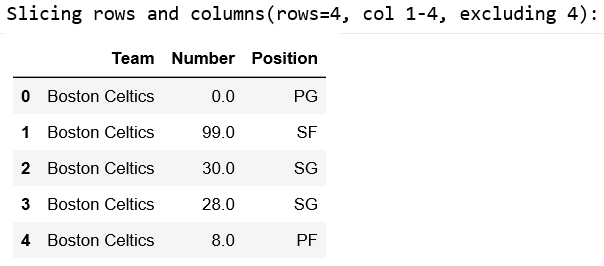
Code #2:
import pandas as geek
data = geek.read_csv("nba.csv")
print("After index slicing:")
x1 = data.ix[10:20, 'Height']
print(x1, "\n")
x2 = data.ix[10:20, 'Salary']
print(x2)
|
Output:
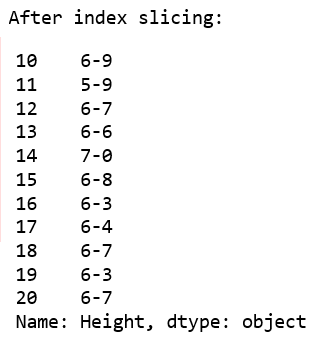
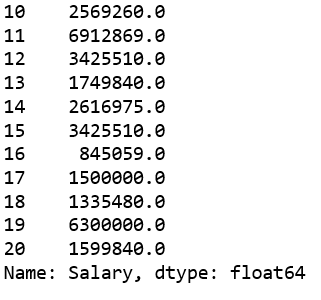
Code #3:
import pandas as pd
import numpy as np
df = pd.DataFrame(np.random.randn(10, 4),
columns = ['A', 'B', 'C', 'D'])
print("Original DataFrame: \n" , df)
print("\n Slicing only rows:")
print("--------------------------")
x1 = df.ix[:4, ]
print(x1)
print("\n Slicing rows and columns:")
print("----------------------------")
x2 = df.ix[:4, 1:3]
print(x2)
|
Output :
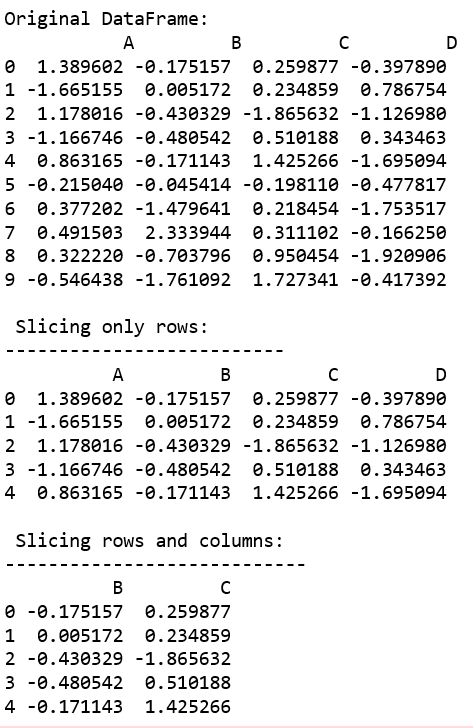
Code #4:
import pandas as pd
import numpy as np
df = pd.DataFrame(np.random.randn(10, 4),
columns = ['A', 'B', 'C', 'D'])
print("Original DataFrame: \n" , df)
print("\n After index slicing (On 'A'):")
print("--------------------------")
x = df.ix[:, 'A']
print(x)
|
Output :
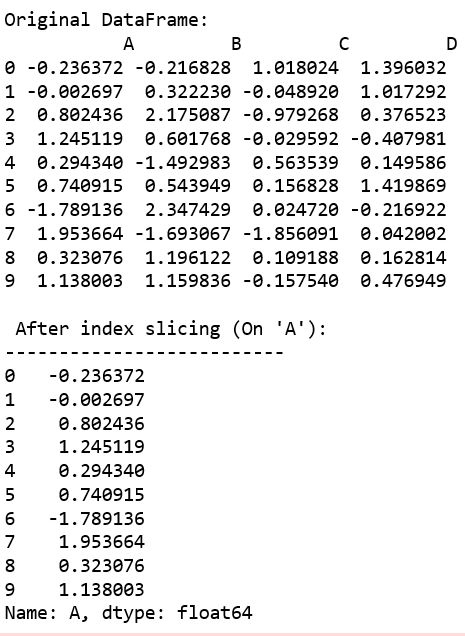
Share your thoughts in the comments
Please Login to comment...